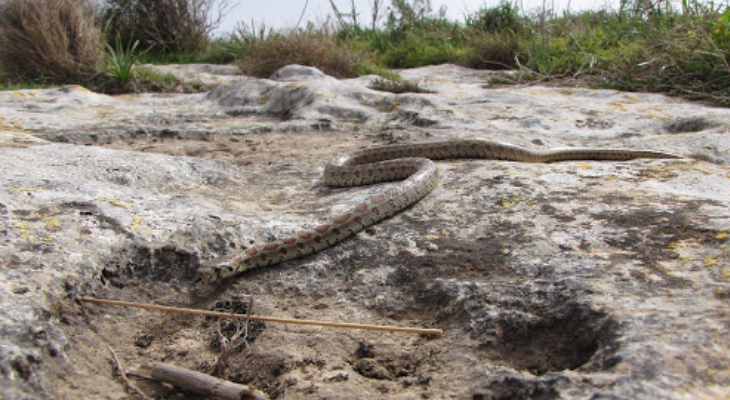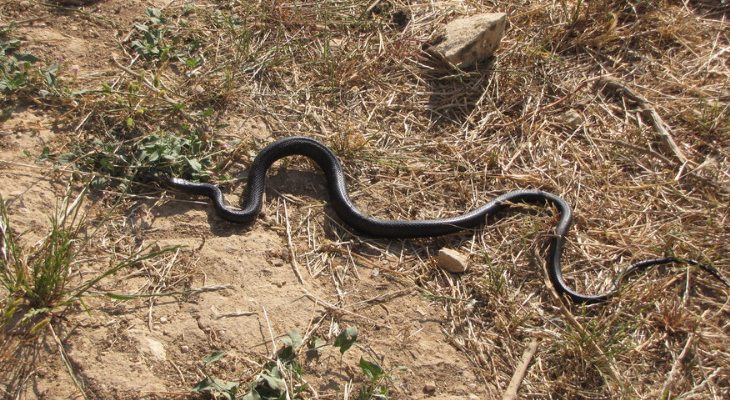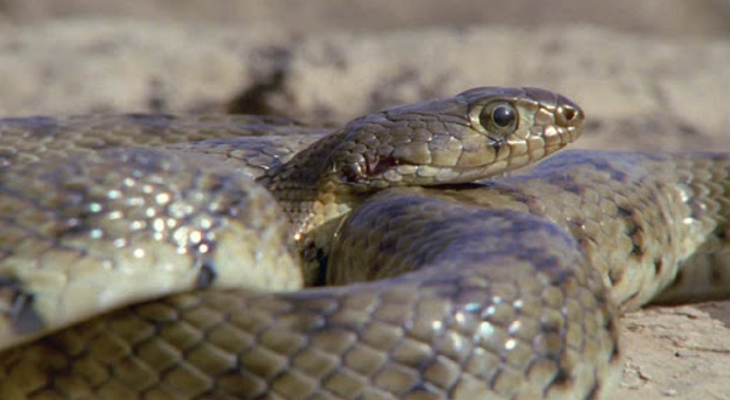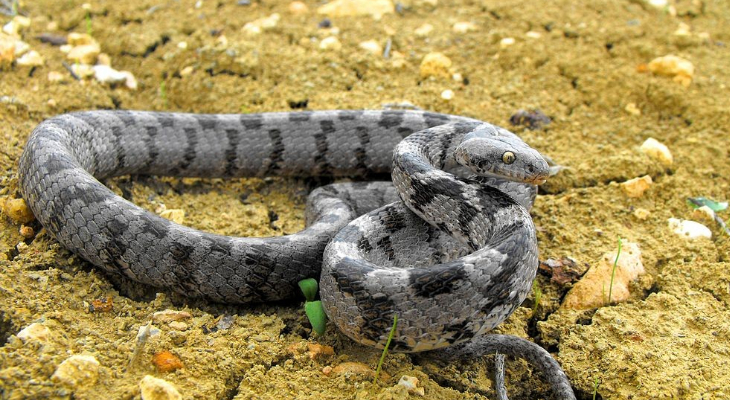Did you know that Malta's wildlife includes four species of snake? Locals rarely see them and know surprisingly little about them; most will mention the lifgha only because they heard stories about how St Paul threw one into the fire and will offer a blank expression when asked about the other three.
Yet, it is important to know about Maltese snakes. Mainly, in case you meet one in a disused building or even up a tree! Contrary to popular belief, there is a venomous snake in Malta. And one that grows to two metres long! But they actually need protection more than you do, as they are all endangered. So read on and know what to do if you happen to stumble upon a snake.
Leopard Snake (Elaphe situal leopardina)

Arnold Sciberras ©2014-2015 Faunamelitensis
Starting with the most famous snake, the Leopard Snake (lifgħa in Maltese) grows up to one metre long. This is not the black snake, as commonly believed, but pale brown in colour with dark-brown or reddish-brown spots and reddish eyes - that sure gives it a mean look! Add to that a forked black mark on the occiput and nape.
You may come across this snake in garigue habitats, moving among the stones and vegetation on the ground, or coiled around tree branches in shaded valleys. It feeds on young birds, lizards, geckos, frogs, mice, rats and small snakes and forages at dawn and dusk, when it is most commonly glimpsed.
This species is one of the indigenous snakes of the Maltese Islands. The female lays only two to seven eggs during the mating season, so it is very important not to harm this animal or its nest.
Western Whip Snake (Hierophis viridiflavus)

Arnold Sciberras. Deviantart / Faunamelitensis
The true black snake of Malta is actually the Western Whip Snake (serp iswed). It is black with a light grey or yellowish belly. Until their fourth year, the young are dark green instead of black (not to be confused with serp ahdar, which translates as Green Snake but refers to the Algerian Whip Snake). The largest of Malta's snakes, it grows up to two metres in length.
You might come across this hibernating snake while it’s basking in the sun among stones and vegetation or actively searching for food on trees at midday. It enjoys the eggs and young of tree-nesting birds as well as lizards, geckos, skinks, small snakes, mice, frogs and large insects.
The Whip Snake is widespread and lives in cracks in the rocks and under rubble. If you spot one, make sure you don’t do anything threatening; this snake strikes and bites furiously when cornered! The female lays five to 15 eggs per season.
Algerian Whip Snake (Hemorrhois algirus)

footage.framepool.com
The Algerian Whip Snake (serp aħdar or serp algerin) is ash grey in colour with a darker head and dark bands on its back, a black spot below the eye and a whitish belly. It grows up to one metre in length.
This snake is active in the daytime and sunset and feeds on lizards, geckos, skinks, small snakes, young birds and small mammals. It lives in cracks in rocks, fortifications, disused buildings and piles of stones.
This species is uncommon and found only in the southeast of Malta. It was probably introduced from North Africa by cargo ships as it is not indigenous and not found elsewhere in Europe.
Cat Snake (Telescopus fallax)

Jeffrey Sciberras via Wikimedia Commons
Another snake species in Malta is the Cat Snake (teleskopu or simply serp). It is ash-grey or pale brown with darker bands. It is slender with a broad, flattened head and grows up to one metre long. Its eyes are characterised by a vertical pupil, which look like cats eyes, hence its name.
You might see this snake between dawn and dusk. This nocturnal hunter feeds on lizards, geckos, other snakes and small mammals. It weakens its prey by coiling itself round it then gives it the coup de grace with a poisonous bite. Luckily for humans, the venom is weak and injected by back teeth of the upper jaw, making it only effective on small animals that can be swallowed whole!
The cat snake lives in rocky habitats and lays only seven to eight eggs at a time. It is not commonly seen because it is nocturnal. It is still uncertain whether the species is indigenous or introduced with cargo shipments. In any case, it is naturalised in the southeast of Malta.
If you see a snake - don’t kill it!
All of these snakes have been flagged by Nature Trust Malta as being endangered species here in Malta. Unfortunately, many snakes are injured by rat bites, hunted by cats, stuck in glue traps for rats and so on.
If you find an injured snake in the wild or find a snake in your home, contact the Wildlife Rescue Team Emergency on 9999 9505 immediately. Please do not do anything until they arrive. Sometimes, Nature Trust warns, the snakes are not resident snakes but exotic pet snakes that escaped from their terrariums - caution should be exercised until they are identified, in case they are poisonous.